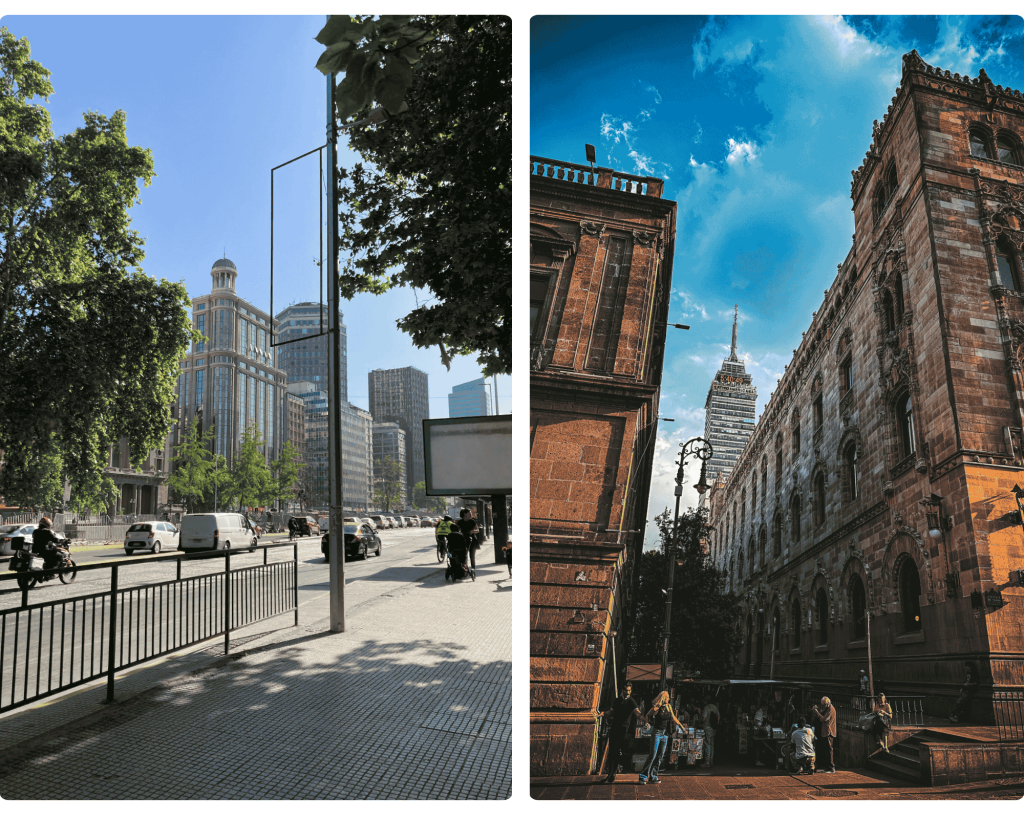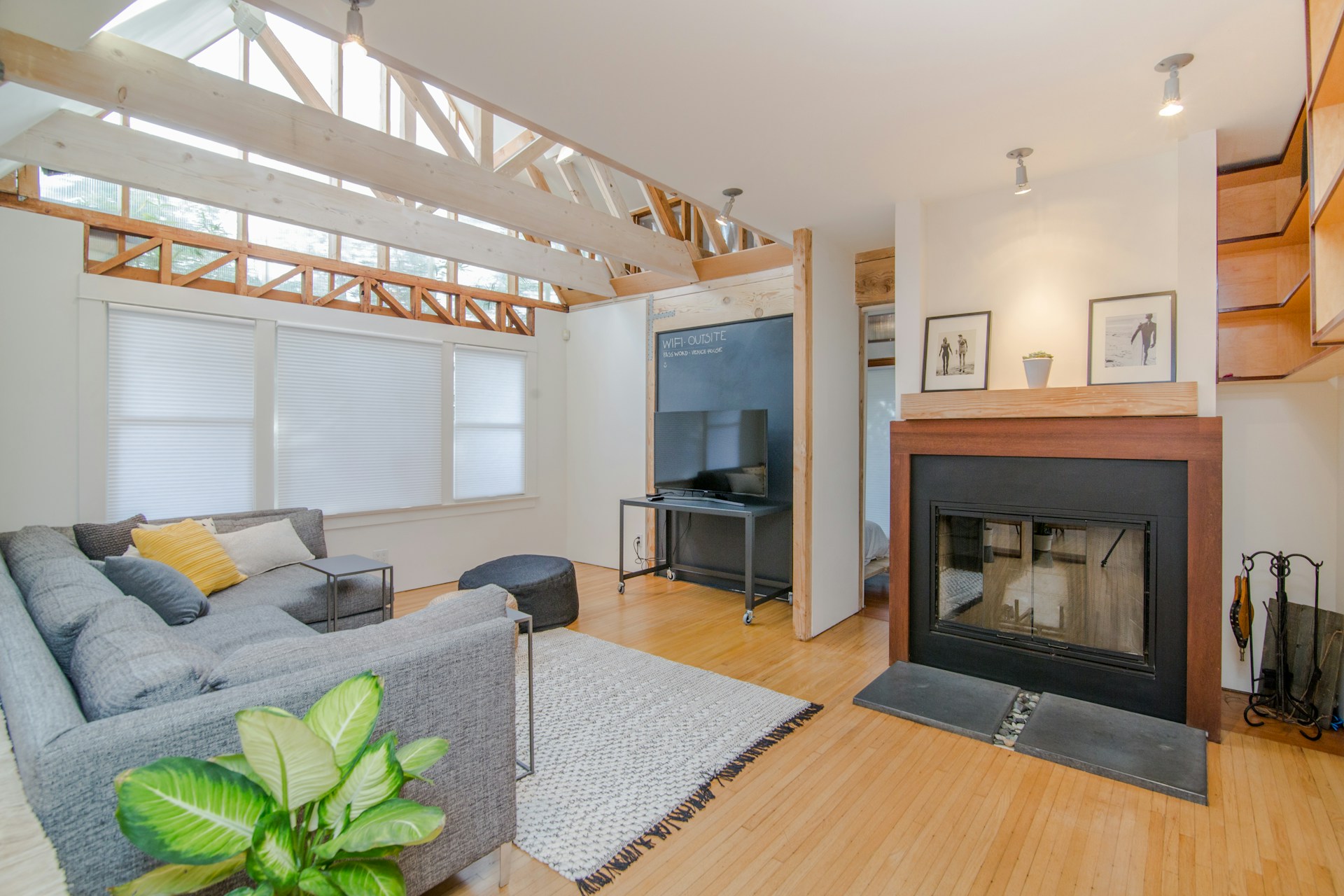Digital Nomads in Latin America: A Complete Guide
Our complete guide to becoming a digital nomad in Latin America. Find out here about visas, stays and more.
In this guide we tell you everything you need to know to be a digital nomad in Latin America. This region offers multiple destinations that win the hearts of thousands of remote workers who embark on a journey to experience its avid culture, hospitality and biodiversity. Latin America is a must-visit destination for you, if as a digital nomad you’re looking to immerse yourself in places with a wealth of culture and plenty to explore.
Benefits of living as a digital nomad in Latin America
Living as a digital nomad in Latin America has multiple benefits, ranging from affordability to cultural richness. Here are some of the advantages that make this region an attractive option.
Work-life balance in Latin America
Latin America offers an excellent quality of life for those seeking a balance between work and leisure. Countries such as Costa Rica, Mexico and Colombia are known for their hospitality and relaxed lifestyle, allowing digital nomads to enjoy a less hectic pace compared to big cities in other regions. In addition, the tropical climate of much of Latin America offers pleasant temperatures for most of the year, which is ideal for those who want to take advantage of the outdoors.
Many destinations in the region also have well-established digital communities, making it easy to connect with other nomads and build support networks. This enhances the remote working experience and enables fast and convenient integration into the local environment.
Easy access in the Latin American region
Another significant advantage of Latin America is its easy accessibility. From the United States and Europe, there are numerous direct flights to major cities such as Mexico City, Bogotá, Lima and Buenos Aires. For those planning to move between Latin American countries, air and land connections are generally affordable and convenient, making it easy to explore multiple destinations in a single stay.
In addition, several countries in the region allow visa-free entry for short stays, especially for those coming from countries in Europe or North America. This factor simplifies travel planning and provides the possibility to explore different countries with fewer bureaucratic restrictions.
Affordable prices as digital nomad in Latin America
One of the main attractions of Latin America for digital nomads is the low cost of living compared to many other regions of the world. In countries such as Mexico, Peru and Bolivia, it’s possible to find accommodation, food and entertainment at very affordable prices, allowing digital nomads to maintain a good lifestyle on a moderate budget.
For example, in cities such as Medellín (Colombia) or Guadalajara (Mexico), the average monthly cost of living can be around €800 ($835.21) to €1,500 ($1,566), depending on lifestyle. This is especially important for those who prefer to stay for longer periods, as they can stretch their budget and enjoy the full experience without compromising their financial situation.
Top places to visit as a digital nomad in Latin America
Latin America is known for its geographical and cultural diversity, which means there’s always something new to discover. From the beaches of the Mayan Riviera in Mexico to the mighty Amazon in Brazil and the Andes in Peru, this region has something for everyone. Digital nomads can enjoy nature, history and culture in each country they visit, combining work and exploration.
Several Latin American cities, such as Buenos Aires, Mexico City and Lima, are noted for their cultural and artistic life. With museums, theatres, festivals and events reflecting the unique character of each country, digital nomads can integrate into local life and use their free time to learn more about the history and art of the region. Each city has something special to offer, from tango in Argentina to carnival in Brazil.
Which countries in Latin America have a digital nomad visa?
For those wishing to settle in Latin America as digital nomads, the region offers several visa options that facilitate temporary residence for remote workers. Countries that already have specific visas for digital nomads include: Mexico, Colombia, Peru, Argentina and Brazil. These visas are an excellent alternative for those seeking to stay in a single country or to establish a base while exploring the region.
Each country has its own particular requirements and benefits, and the period of stay often varies. Some countries allow an initial residence of one year with the possibility of extension, while others offer more flexible programmes for short-term stays. This type of visa allows digital nomads to work for clients or companies abroad without the need for a local contract, which is ideal for those who work remotely and wish to maintain their employment or freelance activity from a location in Latin America.
Top destinations in Latin America for digital nomads
Latin America offers a wide variety of destinations for digital nomads, from cosmopolitan cities to small beach side towns. These are some of the most recommended destinations for digital nomads in the region:
Medellín, Colombia
Medellín is one of the most popular destinations for digital nomads in Latin America due to its spring-like climate, low cost of living and vibrant international community. The city has many co-working spaces, an excellent digital infrastructure and a diverse cultural offer. Medellín is known for its growing security and its transformation as one of Colombia’s most innovative cities. For digital nomads, the city is a combination of modern urbanism and natural landscapes.
Mexico City, Mexico
Mexico City (CDMX) is ideal for those seeking an intense urban experience, with access to a wide variety of cultural and recreational activities. CDMX is one of the largest and most diverse cities in Latin America, with a wide range of museums, renowned cuisine and an active nightlife. Although the cost of living is slightly higher than in other cities in Mexico, it’s still affordable compared to many cities in Europe or the United States. In the CDMX, a wide range of co-working spaces can be found, from informal spaces to high-end offices, adapting to different types of budgets and needs.
Buenos Aires, Argentina
Buenos Aires is known as the “Paris of South America” for its European architecture and bohemian lifestyle. This city offers a unique lifestyle, with a great cultural offer, from tango to theatre and a local gastronomy famous for its meats and wines. Buenos Aires is also an affordable city for digital nomads, with numerous co-working spaces and neighbourhoods such as Palermo or Recoleta, ideal for those looking for an urban experience in a relaxed and friendly atmosphere.
Playa del Carmen, Mexico
For those digital nomads who prefer the beach and a tropical atmosphere, Playa del Carmen is a perfect choice. Located on the Riviera Maya, Playa del Carmen offers a diverse community of foreigners and plenty of waterfront coworking options. In addition to its beaches, it’s close to archaeological sites and other natural attractions, allowing digital nomads to combine work with recreational activities in a paradisical setting.
Lima, Peru
Lima is an increasingly attractive city for digital nomads, thanks to its strategic location on the Pacific coast and its growing technology infrastructure. The city offers a variety of safe and attractive neighbourhoods, such as Miraflores and Barranco, and boasts internationally renowned cuisine. Its location allows digital nomads to explore other points of interest in Peru, such as Cusco and Machu Picchu, making Lima a complete destination for work and leisure.
How to enter and change countries in Latin America?
To enter Latin America as a digital nomad, it’s recommended to start your journey in a country that offers easy entry and visa facilitation. Mexico and Costa Rica, for example, allow visa-free entry for citizens of multiple countries, which can simplify the start of the trip.

Entry requirements and visas as a digital nomad in Latin America
Most Latin American countries allow visa-free entry for an initial period of 90 days for citizens of Europe, North America and other countries with visa waiver agreements. However, if the plan is to reside for longer, it’s important to research country-specific requirements and consider applying for digital nomad visas, where available. These visas generally require proof of income or financial solvency, health insurance and, in some cases, proof of remote work.
Health insurance for digital nomads in Latin America
When travelling to Latin America, international health insurance is essential. There are insurance policies specifically designed for digital nomads that offer coverage in multiple countries, which is ideal for those planning to move within the region. Popular options include SafetyWing and World Nomads, which offer medical cover as well as protection in case of lost equipment or cancelled flights.
Recommended routes to explore Latin America
For digital nomads who wish to explore several countries in Latin America, a recommended route may start in Mexico, an accessible country with a strong digital infrastructure and multiple nomadic communities. From Mexico, you can travel south through Guatemala and Costa Rica, and then continue on to Colombia. From there, many choose to visit Ecuador and Peru before heading to Bolivia, Chile and Argentina.
It’s recommended to plan travel according to the climatic seasons of each region. For example, while summer in southern Latin America (December to March) is ideal for exploring Chile and Argentina, in other countries, such as Mexico and Colombia, you can enjoy warm, dry weather all year round. Flexibility in dates and proper planning are key to making the most of the experience in each destination.
Important: If you are a frequent traveler and want to stay connected without worrying about expensive roaming or looking for a new SIM at every destination, Holafly’s subscription plans are for you. With a single eSIM, enjoy internet in more than 170 countries for a fixed price and no surprises on your bill. Travel without limits and connect easily and securely! 🚀🌍

What’s the cost of living in Latin America?
The cost of living in Latin America varies significantly between countries and cities, allowing digital nomads to choose a destination that suits their budget. In general terms, living in Latin America is more affordable than in many cities in Europe or North America, especially in countries in Asia and southern Africa.
Cost of living in different countries
Some of the most affordable destinations for digital nomads in Latin America include countries such as Colombia, Bolivia and Peru, where it is possible to cover monthly expenses between $700 and $1,200, depending on lifestyle. For example:
- Colombia: In cities like Medellín, the cost of living for a digital nomad can range from $800 to $1,500 per month, depending on the location and type of accommodation. Rent for a furnished flat can range from $300 to $800, and daily living costs for food and transportation are relatively low.
- Mexico: In popular cities such as Mexico City or Playa del Carmen, the cost of living is slightly higher than in other parts of Latin America. In the capital, monthly expenses typically range from $1,200 to $2,000. However, the cost can be reduced in smaller or less touristy cities, where a digital nomad might spend between $800 and $1,200 per month.
- Argentina: Despite economic fluctuations and inflation, Argentina remains an attractive option for digital nomads due to the quality of life it offers. In Buenos Aires, monthly expenses can range from $900 to $1,600. Rent, food and transport are affordable, especially for those who handle foreign currency.
- Costa Rica: With a slightly higher standard of living, Costa Rica has a monthly cost of living that can range from $1,200 to $2,000. However, living near the beach or in rural areas can reduce costs.
Recommended stay in these Latin American destinations
The length of stay in each country varies depending on visa laws and the lifestyle of the digital nomad. In general, a stay of at least 1 to 3 months is recommended to experience the place and adapt work routines to the new environment. For example:
- Mexico and Colombia: Offer visas for up to 180 days, so they can serve as a long-term base for exploring other nearby countries.
- Peru and Argentina: Allow an initial stay of up to 90 days, with the possibility of extension.
- Costa Rica: With a tourist visa of up to 90 days, it’s ideal for short or intermediate stays, although many digital nomads opt to stay for only a few months due to its relatively higher cost of living.
How to manage tax payments in Latin America?
Tax payments for digital nomads in Latin America depend on the length of stay and the tax legislation of each country. In some cases, if the digital nomad stays in a country for more than 183 days a year, he could be considered a tax resident and therefore subject to taxation on his or her income. However, each country has its own regulations.
Countries with double taxation treaties in Latin America
Some Latin American countries, such as Mexico, Chile and Colombia, have double taxation agreements with several nations, which means that digital nomads don’t have to pay taxes twice on the same income. This type of arrangement is particularly useful for those who have income in their home country and wish to avoid additional tax burdens.
In order to manage taxes properly, it’s recommended:
- Consult a tax advisor: Before settling in a country, it’s recommended to seek advice on tax obligations. In some cases, the digital nomad may be exempt from taxation if he or she can prove that his or her income comes from foreign sources.
- Consider length of stay: Many countries consider a person to be a tax resident if they stay more than 183 days in their territory. In these cases, it’s important to check whether there are additional requirements and, if possible, to assess whether a shorter stay is appropriate.
- Check visa options: Some visas for digital nomads have tax exemptions, such as the Costa Rican visa. It’s advisable to investigate whether the country of interest offers these benefits.

Frequenty Asked Questions about digital nomadism in Latin America
Generally speaking, yes. There are safe destinations with good infrastructure for digital nomads. Countries such as Mexico, Colombia and Costa Rica have established international communities and safe areas. As anywhere, it’s recommended to research specific areas and take precautions, especially in large cities.
Internet quality in Latin America varies by country and region. In large cities, the connection is often stable and fast, with fibre optic services available in places such as Mexico City, Medellín and Buenos Aires. In rural or more touristy areas, such as beach areas, the connection may be slower or less reliable.
Most countries in Latin America allow visa-free entry for a period of 90 days for citizens of the United States, Canada, the European Union and several countries in Asia and South America. Some countries, such as Mexico, allow up to 180 days of stay. For longer stays, it’s recommended to check visa requirements.
Yes, it’s highly recommended to have health insurance when living in Latin America, especially if you plan to move between countries. There are specific insurances for digital nomads that cover both medical emergencies and travel-related incidents. Companies such as SafetyWing and World Nomads offer flexible and affordable cover for digital nomads.
Yes, most countries in Latin America accept international credit and debit cards at merchants and ATMs. In some rural areas or small businesses, it’s preferable to carry cash. Money transfer services, such as Wise, can be useful to exchange currency cheaply and conveniently.





 Language
Language 


















 No results found
No results found








